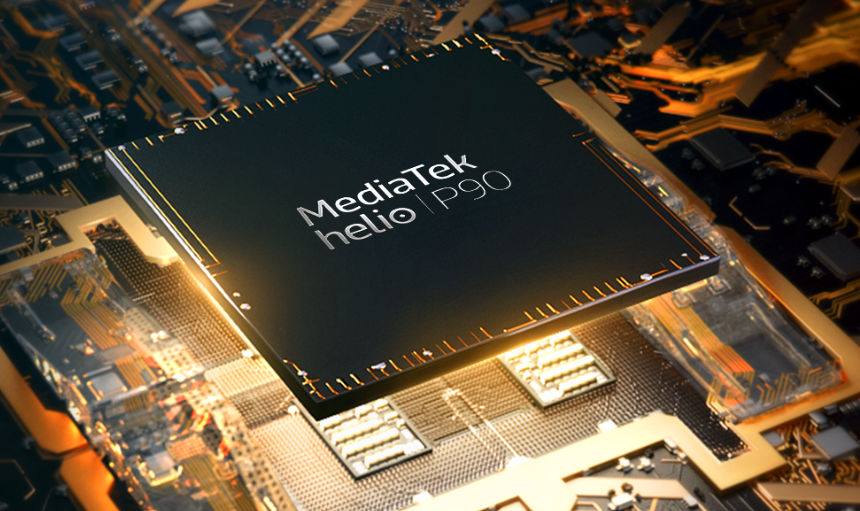
MediaTek has introduced Helio P90, the company’s latest top-end SoC in the P-series, as it had promised. It is based on 12nm TSMC FinFET technology, same as the P60 and P70, but this comes with APU 2.0 with fusion AI to most complex AI apps and tasks while running multiple AI functions at the same time. It generates 1127GMACs for 4.6 times more performance than MediaTek Helio P60 & P70 for performing tasks with a breeze while being extremely power efficieny.
It has a two ARM Cortex-A75 2.2 GHz CPUs and six ARM Cortex-A55 2 GHz CPUs. It has IMG PowerVR GM 9446 GPU that promises up to 15% improvement compared to the Mali-G72 MP3 used in the Helio P60 and Helio P70. It supports up to 48MP camera, 45% larger than 8K resolution – with zero delay, 24+16MP dual rear cameras and has 480 fps slow motion video support.
It can track and analyze actions and poses of multiple people in real-time. You can use AR avatars, analyze and perfect your cricket swing, detect multiple objects in a scene or shoot the best low-light and portrait (bokeh) photography. It supports 5-person human pose tracking, Full body avatar AR, 3D pose tracking, Multiple object and scene identification, AR/MR acceleration, AI depth engine, Google Lens, ARCore support, Secure and accurate facial recognition
| Helio P90 | Helio P70 | |
| Process | TSMC 12nm | TSMC 12nm |
| Apps CPU | 2x Cortex-A75 @ 2.2 GHz 6x Cortex-A55 @ 2GHz |
4x Cortex-A73 @ 2.1 GHz4x 4x Cortex-A53 @ 2.0 GHz |
| Memory | 2X LPDDR4x Up to 1800MHz up to 8GB, eMMC 5.1 / UFS 2.1 | 1X LPDDR3 933MHz, 2X LPDDR4x Up to 1800MHz up to 8GB (LPDDR4x), eMMC 5.1 / UFS 2.1 |
| Camera | 24+16MP or 48MP camera @ 30fps. (AI) Facial Detection & Scene Detection; Hardware Warping Engine (EIS); Anti-Blooming Engine; MEMA 3DNR; Multi-Frame Noise reduction; Real-time HDR recording and viewing; Zig-Zag HDR; RAW-domain multi-frame HDR; PDAF | 24+16MP or 32MP camera @ 30fps. (AI) Facial Detection & Scene Detection; Hardware Warping Engine (EIS); Anti-Blooming Engine; MEMA 3DNR; Multi-Frame Noise reduction; Real-time HDR recording and viewing; Zig-Zag HDR; RAW-domain multi-frame HDR; PDAF |
| Display | 2520 x 1080 (Full HD+) at 21:9 | 2400 x 1080 (Full HD+) at 20:9 |
| Video Decode / Video Encode | 2160p (2160 x 1080), h.264, h.265 / HEVC at 30 fps
2160p h.264 at 30 fps |
2160p (2160 x 1080), h.264, h.265 / HEVC at 30 fps
2160p h.264 at 30 fps |
| Graphics | IMG PowerVR GM 9446 at up to 970MHz | ARM Mali-G72 MP3 at up to 900MHz |
| Modem | Cat-7 DL / Cat-13 UL, 4×4 MIMO, 3CA, 256QAM, HPUE, IMS (VoLTE\ViLTE\WFC), eMBMS, Dual 4G VoLTE (DSDS), Band 71, TAS 2.0 | Cat-7 DL / Cat-13 UL, 2×2 UL CA, TAS 2.0, HUPE, IMS (VoLTE\ViLTE\WoWi-Fi), eMBMS, Dual 4G VoLTE (DSDS), Band 71 |
| Connectivity | Integrated Wi-Fi 802.11 a/b/g/n/ac, Bluetooth 5.0, GPS + Glonass + Beidou + Galileo, FM radio |
Integrated Wi-Fi 802.11 ac GPS/Glonass/Beidou ANT+, Bluetooth 4.2 /FM |
The Helio P70 is in production now, and is expected to be available in smartphones in the first half of 2019. The company is in talks with a U.S. mobile brand about using the P90, so we can expect an announcement during MWC in February.
